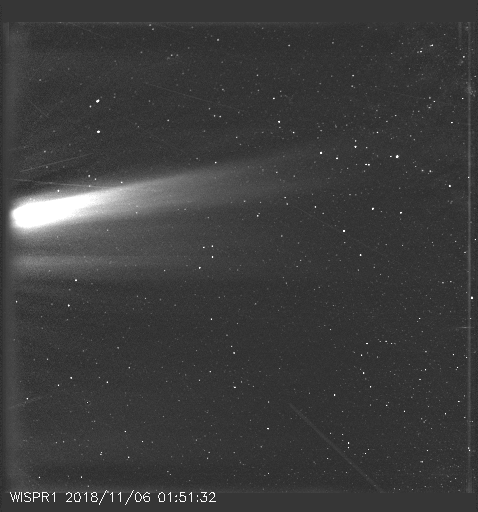The 1st Sun Details from NASA's Parker Solar Probe Are Out. And They're Hot!

Want to see the sun in a whole new way?
Now you can do just that by looking through a host of science data newly made available to the public. That information was gathered by NASA's Parker Solar Probe during its first two close passes of the sun. The flybys brought the spacecraft closer to the sun than any previous vehicle had gone, offering scientists an incredible opportunity to learn more about our star.
"Parker Solar Probe is crossing new frontiers of space exploration, giving us so much new information about the sun," Nour E. Raouafi, Parker Solar Probe project scientist at the Johns Hopkins University Applied Physics Laboratory, said in a statement. "Releasing this data to the public will allow them not only to contribute to the success of the mission along with the scientific community, but also to raise the opportunity for new discoveries to the next level."
Related: NASA's Parker Solar Probe Mission to the Sun in Pictures
Parker Solar Probe launched in August 2018 for a seven-year mission that is targeting the constant stream of highly charged plasma leaving the sun, called the solar wind, and the star's outer atmosphere, called the corona. Studying these phenomena requires getting incredibly close to the sun; the spacecraft primarily gathers data while within about 23 million miles (37 million kilometers) of our star.
Onboard are four science experiments: Fields Experiment, which studies electric and magnetic fields; Integrated Science Investigation of the Sun, which measures high-energy charged particles in the solar wind and corona; Wide-Field Imager for Solar Probe, which images the solar wind and other structures; and Solar Wind Electrons Alphas and Protons Investigation, which measures different types of particles in the solar wind.

And now, you too can pore through data gathered by those instruments during the first two flybys: Oct. 31-Nov. 12, 2018, and March 30-April 19, 2019. During the second flyby, mission engineers were able to increase the amount of data the spacecraft sent home, thanks to better data-return rates than expected. There is no central hub for the data, but NASA has provided a list of websites to explore.
Get the Space.com Newsletter
Breaking space news, the latest updates on rocket launches, skywatching events and more!
According to the same NASA statement, the first full-fledged science results from the mission should be published later this year.
Parker Solar Probe has also already made its third flyby of the sun; the spacecraft's next closest approach is on Jan. 29, 2020.
- What's Inside the Sun? A Star Tour from the Inside Out
- NASA Sun Probe Spies the Solar Wind in 1st Birthday Photo
- Here's What Earth Looks Like When You're Heading to the Sun
Email Meghan Bartels at mbartels@space.com or follow her @meghanbartels. Follow us on Twitter @Spacedotcom and on Facebook.

Join our Space Forums to keep talking space on the latest missions, night sky and more! And if you have a news tip, correction or comment, let us know at: community@space.com.

Meghan is a senior writer at Space.com and has more than five years' experience as a science journalist based in New York City. She joined Space.com in July 2018, with previous writing published in outlets including Newsweek and Audubon. Meghan earned an MA in science journalism from New York University and a BA in classics from Georgetown University, and in her free time she enjoys reading and visiting museums. Follow her on Twitter at @meghanbartels.
-
mharratsc (All Bold mine)Reply
"Onboard are four science experiments: Fields Experiment, which studies electric and magnetic fields; Integrated Science Investigation of the Sun, which measures high-energy charged (which means electric) particles in the solar wind and corona; Wide-Field Imager for Solar Probe, which images the solar wind and other structures; and Solar Wind Electrons Alphas and Protons Investigation, which measures different types of (electric) particles in the solar wind. "
NASA finally took a dramatic step in trying to elevate itself from the entrenchment the astrophysical community has been mired in for the past 100 years due to Eddington's horse-and-buggy era theory of stars by building a probe that is 100% aimed at understanding the electrodynamics of stars.
Between the data that this probe is sending to us, combined with the information that Voyager 1 and Voyager 2 are sending back regarding the double-layer boundary at the edge of the heliosphere, all that will be left will be for someone at NASA to put 2 and 2 together to realize that all three probes are reporting the same thing: the electromagnetic physiology of our star, and how very, very much larger and more beautifully complex it is than Eddington could have ever envisioned in his lifetime.
Welcome, one and all, to our amazing Electric Universe!
Cheers









